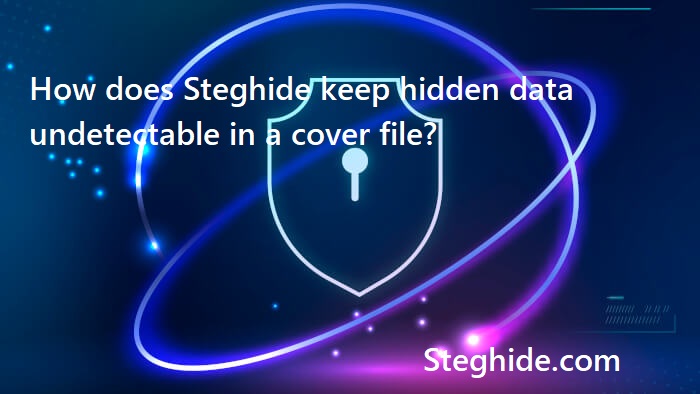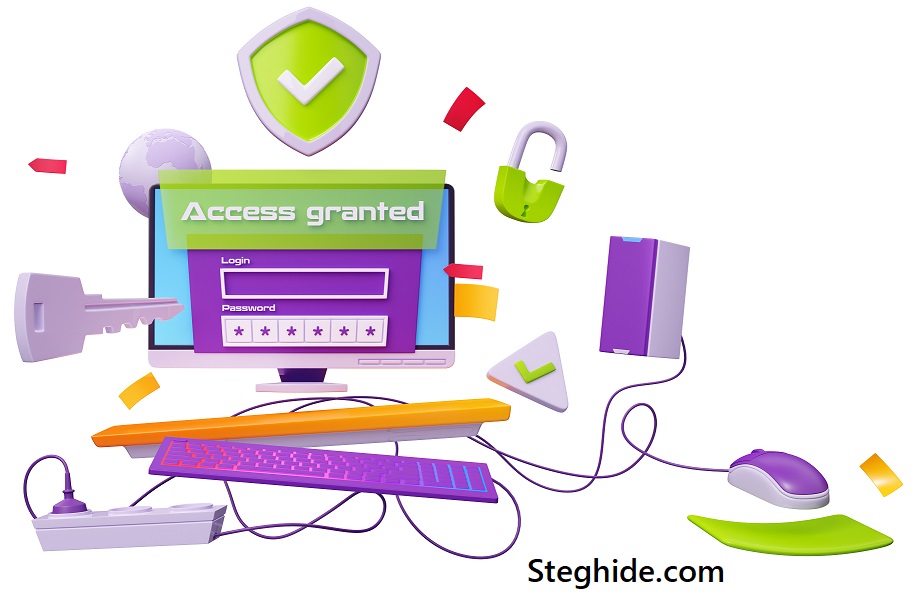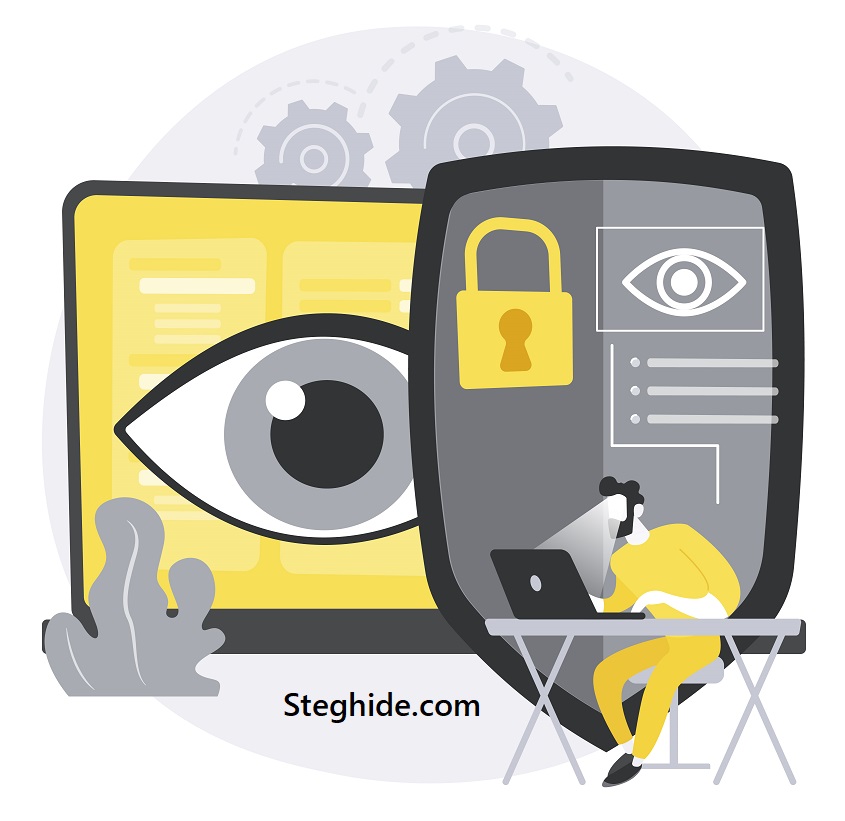Steghide is a robust open-source steganography tool designed to conceal sensitive data within image and audio files, making it invisible to casual observers. By embedding information in cover files like JPEG or WAV, Steghide ensures that hidden messages remain secure without altering the file’s appearance or sound. This capability makes it a go-to choice for cybersecurity professionals, researchers, and anyone seeking discreet data protection.
The strength of Steghide lies in its ability to hide data undetectably, leveraging advanced techniques like encryption and least significant bit (LSB) manipulation. These methods ensure that embedded information blends seamlessly into the cover file, avoiding visual or auditory distortions. Understanding how Steghide achieves this undetectability is key to using it effectively for secure communication or data storage.
This article delves into the mechanisms Steghide employs to keep hidden data undetectable, exploring encryption, embedding algorithms, and file format considerations. From technical processes to practical tips, we’ll uncover how Steghide maintains stealth in steganography. Whether you’re new to the tool or an experienced user, this guide offers valuable insights for mastering secure data hiding.
Steghide’s Core Mechanisms for Undetectability
Encryption for Enhanced Security
Steghide uses strong encryption, such as the Rijndael algorithm (AES), to secure hidden data before embedding it. This ensures that even if someone suspects hidden content, they cannot access it without the correct passphrase. Encryption scrambles the data into an unreadable format, adding a layer of protection. Only authorized users with the passphrase can decrypt and extract the hidden information, maintaining confidentiality.
Least Significant Bit (LSB) Embedding
Steghide employs LSB embedding to hide data within cover files. This technique modifies the least significant bits of pixel or audio sample values, which have minimal impact on the file’s appearance or sound. By altering these bits, Steghide embeds data in a way that is nearly imperceptible. The subtle changes blend into the file’s natural noise, making detection difficult without specialized analysis.
Random Distribution of Data
To avoid patterns that could reveal hidden data, Steghide randomly distributes the embedded bits across the cover file. This randomization prevents clustering, which might be detectable through statistical analysis. By spreading data evenly, Steghide ensures the file’s structure remains consistent with its original form. This approach enhances undetectability, as the changes appear as natural variations in the file’s data.
Role of File Formats in Maintaining Stealth
Choosing Compatible File Formats
Steghide supports specific formats like JPEG, BMP, WAV, and AU, which provide ample space for hiding data. These formats allow LSB embedding without significant quality loss. For example, JPEG’s frequency domain or WAV’s uncompressed samples offer ideal locations for data concealment. Choosing the right format ensures the hidden data integrates seamlessly, avoiding distortions that could raise suspicion.
Advantages of Uncompressed Formats
Uncompressed formats like BMP and WAV are particularly effective for Steghide’s stealth capabilities. Their large data capacity allows for significant embedding without affecting quality. Steghide can modify numerous bits while keeping changes imperceptible. These formats are ideal for:
- High-capacity data hiding without compression artifacts.
- Maintaining file integrity during embedding.
- Avoiding detection by statistical tools.
- Supporting large datasets securely.
- Ensuring compatibility with Steghide’s algorithms.
Challenges with Lossy Formats
Lossy formats like JPEG pose challenges due to compression, which can disrupt embedded data. Steghide mitigates this by embedding data in the frequency domain, where changes are less noticeable. However, users must avoid recompressing JPEG files after embedding, as this could corrupt the hidden data. Careful handling of lossy formats ensures the data remains intact and undetectable.
Encryption’s Role in Data Protection
How Encryption Prevents Unauthorized Access
Steghide’s encryption ensures that hidden data is unreadable without the correct passphrase. Using algorithms like AES-128, it transforms the data into a secure cipher before embedding. Even if someone extracts the data using steganalysis, they cannot decipher it without the key. This dual layer of protection hiding and encryption—makes Steghide highly secure for sensitive information.
Passphrase Strength and Best Practices
The strength of Steghide’s encryption depends on the passphrase used. A strong, complex passphrase with a mix of characters enhances security, making brute-force attacks impractical. Users should avoid simple or predictable passphrases to prevent unauthorized access. Regularly updating passphrases and storing them securely further ensures the hidden data remains protected from prying eyes.
Impact of Encryption on Detectability
Encryption itself does not make data more detectable, as Steghide embeds the encrypted data using LSB techniques. The encrypted bits appear as random noise, blending into the cover file’s natural variations. This ensures that even advanced steganalysis tools struggle to identify the presence of hidden data, as the encrypted payload mimics the file’s inherent randomness.
Minimizing Detectable Changes in Cover Files
Preserving Visual and Auditory Quality
Steghide’s algorithms are designed to minimize changes to the cover file’s perceptible qualities. For images, it adjusts pixel values subtly to avoid visual artifacts. For audio, it modifies samples to prevent audible distortions. By targeting the least significant bits, Steghide ensures the file remains functional and indistinguishable from its original version, maintaining its cover as an innocent file.
Avoiding Statistical Anomalies
Statistical analysis can detect hidden data by identifying unusual patterns. Steghide counters this by randomizing data placement and using small, incremental changes. This approach ensures the file’s statistical properties remain consistent with an unmodified file. For example, in JPEGs, Steghide embeds data in a way that aligns with the file’s compression patterns, avoiding detectable anomalies.
Tools and Techniques to Enhance Stealth
To further reduce detectability, users can employ these techniques:
- Use high-quality cover files to mask changes.
- Test files with steganalysis tools before sharing.
- Embed smaller datasets to minimize bit alterations.
- Choose large files to distribute changes widely.
- Verify file integrity post-embedding to ensure no artifacts.
These practices help maintain the cover file’s natural appearance, enhancing Steghide’s undetectability.
Steganalysis and How Steghide Counters It
Understanding Steganalysis Threats
Steganalysis involves analyzing files to detect hidden data, using techniques like statistical analysis or machine learning. Steghide counters these threats by embedding data in a way that mimics natural file variations. Its use of LSB and randomization makes it difficult for steganalysis tools to distinguish embedded data from noise. Understanding these threats helps users optimize their Steghide settings.
Steghide’s Resistance to Common Attacks
Steghide is designed to resist common steganalysis methods, such as chi-square tests or histogram analysis. By distributing data randomly and using encryption, it avoids predictable patterns that could reveal hidden content. Users can enhance resistance by:
- Avoiding overuse of a single cover file.
- Using files with complex data structures.
- Embedding minimal data to reduce changes.
- Testing files for detectable patterns.
- Combining Steghide with other security measures.
These steps bolster Steghide’s defenses against detection.
Limitations and Vulnerabilities
While Steghide is robust, it is not immune to advanced steganalysis, particularly if users embed large datasets or use low-quality cover files. Over-modifying a file can create detectable artifacts. To mitigate this, users should test files with steganalysis tools and adjust embedding settings. Staying updated on steganalysis advancements also helps users adapt their techniques to maintain undetectability.
Practical Tips for Maximizing Undetectability
Choosing the Right Cover File
Selecting an appropriate cover file is critical for undetectability. High-resolution images or lengthy audio files provide more space for embedding, reducing the impact of changes. Files with natural noise or complexity, like busy images or music tracks, better mask hidden data. Avoid overly simple or small files, as changes may be more noticeable and easier to detect.
Testing and Validating Stego Files
After embedding data, test the stego file to ensure it appears unchanged. Use standard software to view or play the file, checking for distortions. Extract the hidden data to verify its integrity. Additionally, run the file through basic steganalysis tools to detect potential vulnerabilities. This validation ensures the file remains functional and secure for sharing or storage.
Combining Steghide with Other Security Measures
To enhance undetectability, combine Steghide with other security practices. For example, transmit stego files over encrypted channels or store them in secure locations. Use multiple cover files to distribute data, reducing the risk of detection. Employ strong passphrases and update them regularly. These combined measures create a layered defense, making it harder for adversaries to uncover hidden data.
Conclusion
Steghide ensures hidden data remains undetectable through encryption, LSB embedding, and strategic file format selection. By randomizing data placement and minimizing perceptible changes, it maintains the cover file’s integrity. Understanding its mechanisms and best practices empowers users to achieve secure steganography. Whether hiding sensitive messages or protecting data, Steghide’s robust techniques offer reliable concealment, making it an essential tool for cybersecurity enthusiasts seeking stealth and security.



